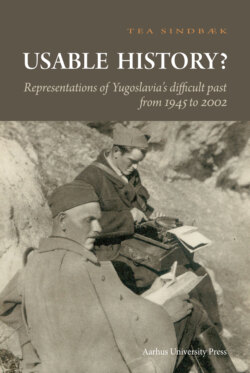Читать книгу Usable History? - Tia Sindbaek - Страница 5
Thematization and cardinal theme
ОглавлениеThe word theme has, in addition to its more general sense of ‘subject’ or ‘topic’ a specific linguistic meaning. The theme is the part of the sentence that is in focus, the point of departure; in essence it is what is being talked about.3 In English the theme is normally assigned the first position in the sentence, but it may also be emphasized in other ways, for example by predication. It may be marked; if the theme of the sentence is not constituted by the grammatical subject, but by, for example, the object or a prepositional phrase, it will obviously be highlighted. Marking the theme in this way can be described as foregrounding.4
Thematization denotes the organization of sentences into theme and non-theme. While some linguistic constructions are obviously more common or natural than others, there is always a certain degree of deliberate selection in the thematization of a sentence. The choice of theme reflects the starting point of the writer or speaker. According to Norman Fairclough, an unmarked theme represents what is assumed as given or established. On the other hand, a marked theme shows which bit of information needs to be emphasized. Thus, the thematization of texts says something about general assumptions as well as rhetorical strategies.5
The concepts of theme and thematization of text and discourse are applicable at levels other than that of the sentence.6 The decision to introduce a particular issue in the title of a book instead of in its penultimate chapter is an act of theme selection, of foregrounding. I will suggest that within historiography and historical culture, theme and thematization can be used in an even broader sense as a widespread phenomenon, reflecting a perspective shared or discussed by many individuals. Thus, I will argue that in the late 1980s genocide was the thematized element of Second World War historiography in Serbia. At other times, in the 1950s and 1960s for example, the same events and developments were described with different choices of themes and thematization.
The particularly privileged position that the theme of genocide held in Serbian historical culture of the 1980s, and later also in a wider Yugoslav context, requires a concept that captures both this very specific status and brings out the resemblance with similar conceptual ‘trumps’ in other debates. I will suggest that this type of dominant and strongly symbolically invested issue be referred to as a cardinal theme. By this term I wish to specify those particular issues of themes that at certain times, in certain cultural contexts, obtain a special discursive power that tends to subdue other issues or perspectives within their field. Other examples of issues privileged as cardinal themes could be the status of the Holocaust in a general European historical culture, or the way that any political matter raised as a question of national security tends to command unlimited attention.7
With the concepts of theme, thematization and cardinal theme, I intend to describe the process through which genocide became a predominant issue within Yugoslav historical culture. This, I believe, was partly the result of the deliberate discursive strategies of individual history writers. But it may also reflect a broader trend, and perhaps even general and shared international tendencies.
The analyses in this book concentrate on the choices of themes and thematization in representations of the Yugoslav massacres of the Second World War. Such choices are revealed in the positions that these issues are ascribed in the internal hierarchies of the texts, in the amounts, frequencies and levels of detail in which they occur, and in the degree to which they are simply stated and taken for granted or marked and emphasised by strategies such as wording and predication.
